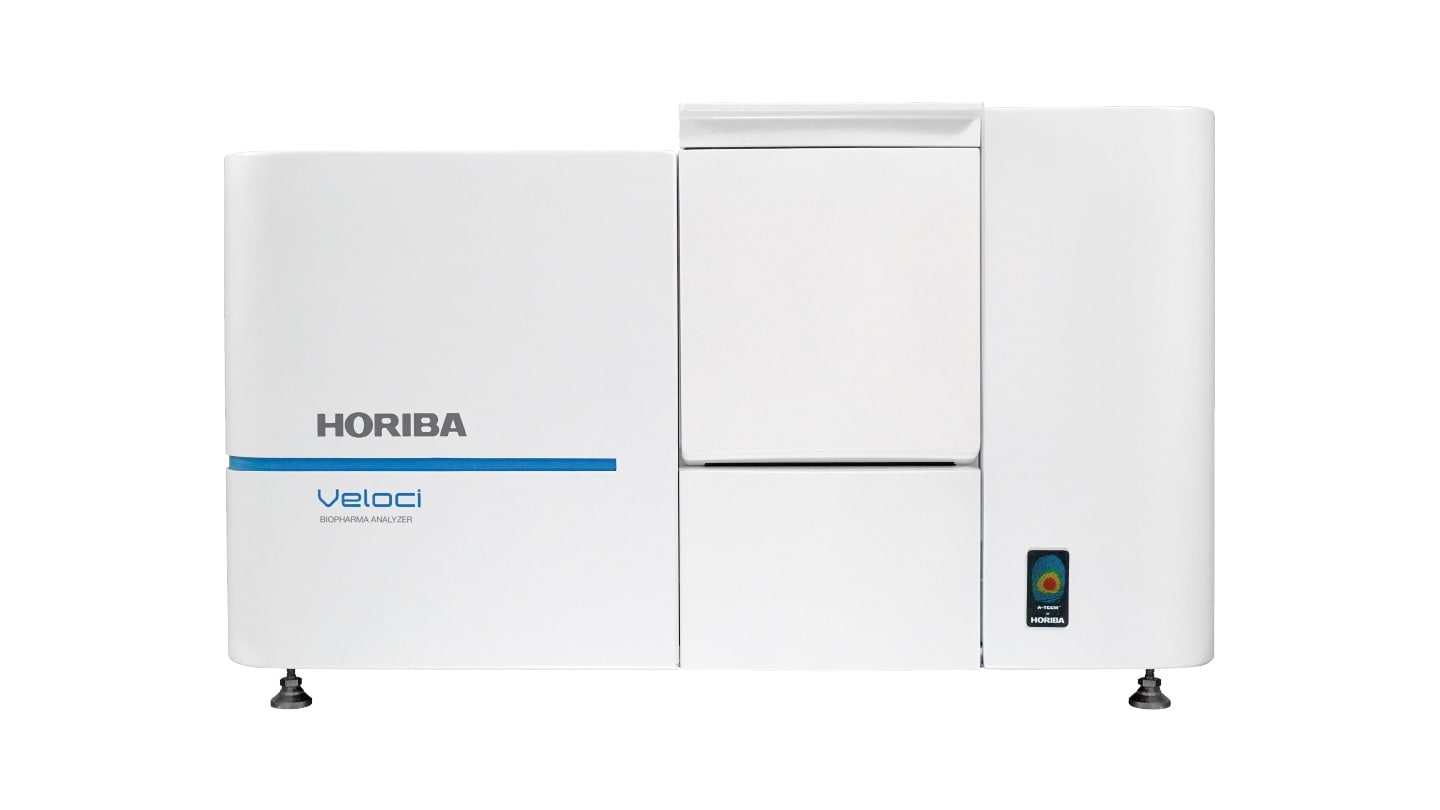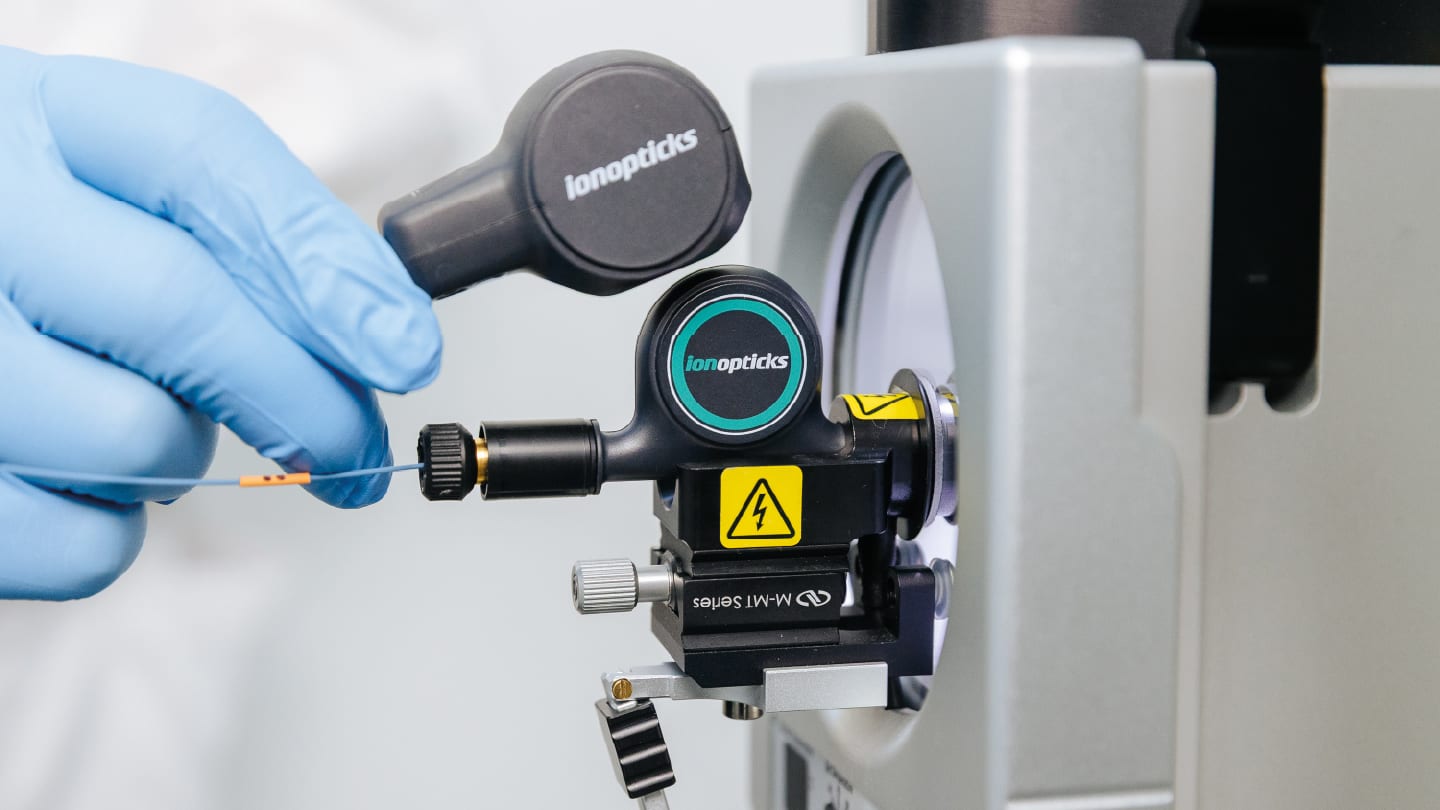10 – timsMetabo

4D separation for small molecule analysis
Produced by Bruker Corporation
timsMetabo brings trapped ion mobility spectrometry (TIMS) to metabolomics and lipidomics, adding a fourth dimension of separation – orthogonal mobility – to conventional mass spectrometry. The system enhances resolution and sensitivity while improving annotation confidence for complex samples. Built specifically for small molecule analysis, timsMetabo enables confident differentiation of isomers, reduces matrix interferences, and improves reproducibility in metabolomic and lipidomic workflows.
Insights from Small Molecule Bioanalysis lead Matthew Lewis
“The timsMetabo was born from a clear and deliberate ambition: to confront the conventional trade-offs in small molecule mass spectrometry head-on. We wanted to enable simultaneous sensitivity, selectivity, precision, accuracy, speed, and reliability.”
“Innovation is not about perfection, it’s about persistence. Stay close to the problem. Stay closer to the people. And never underestimate the power of a team united by purpose.” Read more.
What the judges say…
“The new highest performance TIMS.”
9 – Nuvia wPrime 2A Media

Tunable mixed-mode chromatography for biomolecule purification
Produced by Bio-Rad Laboratories
Nuvia wPrime 2A Media is a tunable weak anion exchange-hydrophobic interaction (AEX-HIC) mixed-mode chromatography resin for challenging biomolecule separations. Its weak AEX functionality allows charge modulation through buffer pH adjustment, enabling greater control and milder elution conditions. The hydrophobic component adds complementary selectivity, combining two interaction modes in one medium. Built on a durable polyacrylamide bead matrix, Nuvia wPrime 2A maintains performance under high flow rates and harsh cleaning conditions, ensuring scalable, reproducible purification from lab to manufacturing scale.
Insights from Nuvia wPrime 2A Media Team
“The time we really knew we had something was when we had multiple customers ask us to be beta-testers because of the known need for a solution – and then when testers responded that they loved the product and asked when they could start ordering,” says Daniel Yoshikawa, senior global product manager.
“The distance between ‘problem’ and ‘solution’ can be measured in curiosity,” says Ian Harwood, senior global product manager. “Curiosity unlocks pathways to unexpected breakthroughs that lead to saving lives.” Read more.
What the judges say…
“A good addition to the toolbox of biopharmaceutical analysis and purification.”
8 – Veloci BioPharma Analyzer

Fast, column-free molecular fingerprinting for biopharma analysis
Produced by HORIBA
The Veloci BioPharma Analyzer is based on a fluorescence spectroscopy technique that involves the simultaneous acquisition of absorbance, transmittance, and fluorescence excitation emission matrix (A-TEEM) spectra in a single measurement. The team calls this new molecular fingerprinting technique A-TEEM spectroscopy, which enables rapid, real-time, high-resolution analysis – without the need for traditional column-based methods. The system supports real-time quality control and process monitoring, providing reliable molecular insights to improve efficiency and consistency across biopharmaceutical workflows.
Insights from global product line manager Cary Davies
“The biggest ‘eureka’ moment was our first pharmaceutical customer receiving FDA approval to implement this new tool as part of a drug packaging validation process.”
“We believe that this innovation will allow the biopharmaceutical industry to develop new, faster and less expensive solutions in their drug production and/or validation processes.” Read more.
What the judges say…
“Smart technique in PAT.”
7 – spectraMRR

Molecular rotational resonance for direct molecular analysis
Produced by BrightSpec
spectraMRR is the first commercial platform powered by molecular rotational resonance (MRR) spectroscopy, enabling direct analysis of complex chemical mixtures without chromatography or sample preparation. By capturing the unique rotational “fingerprints” of molecules in the gas phase, it allows rapid and confident identification and quantification. The integrated system combines high-resolution spectroscopy with advanced computing and user-friendly software, streamlining workflows and providing new insights across pharmaceutical, chemical, and academic applications.
Insights from co-founder and CTO Justin Neill
“To make the technique practical for analytical chemists, we had to engineer solutions from the ground up. This required major advances to achieve long-term stability and hands-off operation.”
“Our goal for the spectraMRR is to allow users to confidently and unambiguously identify the structures of small molecules, while also dramatically simplifying user requirements for method development and reference standards.” Read more.
What the judges say…
“New instrument for gas phase molecular identification based on a new principle: the spectral recording of the rotational fingerprint of molecules.”
6 – Smart Subtract

Probability-based subtraction for GC-MS and GC×GC-MS data
Produced by SepSolve Analytical
Smart Subtract uses a probability-based approach to reveal meaningful differences between GC-MS or GC×GC-MS chromatograms. By suppressing minor fluctuations, it generates clean subtracted chromatograms that highlight only significant changes while retaining full spectral information for downstream processing. The tool integrates with existing workflows for library searching and reporting – supporting fast, informed decision-making in sectors such as petrochemicals, flavors and fragrances, and recycling, where immediate detection of contaminants, off‑odors, or formulation deviations is critical.
Insights from Principal Scientist Pete Grosshans
“Direct (or naïve) subtraction of two chromatographic datafiles never gives the straightforward results we expect. To generate meaningful subtractions, we had to understand and overcome the mechanisms that cause subtraction to fail.” Read more.
What the judges say…
“Smart use of AI technology.”
5 – Agilent 1290 Infinity III Hybrid Multisampler

Feed Injection technology for enhanced HPLC/UHPLC performance
Produced by Agilent Technologies
The Agilent 1290 Infinity III Hybrid Multisampler introduces Agilent’s Feed Injection technology to HPLC/UHPLC workflows. Feed Injection continuously infuses the sample into the mobile phase stream, directly at the point of injection – enabling precise control over sample delivery, while minimizing solvent effects, and improving chromatographic performance. The system enables accurate detection of trace-level compounds, such as PFAS, by maintaining peak integrity even with high-volume injections of strong solvents. And by eliminating the need for additional sample preparation, the Hybrid Multisampler aims to simplify workflows and enhance reproducibility.
Insights from product manager Juan Liang-Schenkelberg
“The inspiration came from listening to users – their pain points sparked the idea to bring this advanced capability of Feed Injection into a format that’s practical, scalable, and solves everyday problems.”
“This project taught us that the most impactful innovations come from creatively addressing problems that lack good answers.” Read more.
What the judges say…
“Versatile autosampler, supporting both routine and research labs.”
“Provides the first integration of multiple important LC injection modes.”
4 – Aurora Series Capillary Flow Column Range

Capillary flow columns combining proteomic depth with long-term stability
Produced by IonOpticks
The 150 μm Aurora Series Capillary Flow Column Range aims to resolve the long-standing trade-off between sensitivity and robustness in proteomics. These columns deliver strong separation performance and wide dynamic range while maintaining consistent stability over extended use. Designed for capillary flow LC-MS workflows, they provide comprehensive proteome coverage with reliable performance, supporting high-throughput and long-term studies in drug discovery, clinical proteomics, and bioprocessing.
Insights from the Aurora Series team
“I’d really like to shout out our Production team,” says Andreia Almeida, Senior R&D Scientist. “They pivoted seamlessly from manufacturing established products to validating new protocols, stress-testing prototypes, and managing the final release, all on an accelerated timeline.
“Allowing failure to happen quickly rather than over-engineering to avoid it proved crucial,” says Greta Briedyte, R&D scientist. Read more.
What the judges say…
“Industry-leading integrated capillary column electrospray cartridge.”
3 – BioResolve Protein A Affinity Columns with MaxPeak Premier Technology

Protein A columns delivering earlier, more precise antibody quantification
Produced by Waters Corporation
BioResolve Protein A Affinity Columns with MaxPeak Premier Technology combine non-porous 3.5 µm particles with bioinert hardware to improve sensitivity in antibody titer quantification. These columns enable accurate measurement at lower concentrations and earlier in bioprocess development, reducing time-to-result during clone selection and process monitoring. Compatible with multi-attribute methods, they streamline workflows by supporting simultaneous titer and aggregate analysis in a single run – enabling earlier decision-making in upstream development and faster optimization in downstream processes.
Insights from Senior Principal Scientist Beatrice Muriithi
“We went out and listened to everyone from loyal Waters customers to labs that had never used our products. We even did blind interviews so people could speak honestly. They told us what frustrated them, what they wished for. That feedback shaped everything.”
“I ran the experiment and saw a signal so sharp I thought I’d made a mistake. I checked everything three times. When I realized it was real, I went to my technical advisor and said, ‘You have to see this.’ It was a moment of pure disbelief before it turned to joy.” Read more.
What the judges say…
“A well-designed innovation – particularly valuable for 2D workflows combining affinity LC and SEC.”
“An important advancement in the quality of affinity chromatography columns.”
2 – Orbitrap Astral Zoom Mass Spectrometer

Next-generation Orbitrap platform accelerating large-scale proteomic discovery
Produced by Thermo Fisher Scientific
The Thermo Scientific Orbitrap Astral Zoom mass spectrometer delivers faster scan speeds, higher sensitivity, and greater throughput over its predecessor. With scan rates up to 270 Hz and enhanced multiplexing capability, it supports deeper proteome coverage and large-scale biomarker discovery. Designed for precision medicine and omics research, the system facilitates high-throughput analyses across proteomics, single-cell studies, and biopharmaceutical development.
Insights from technical lead Johannes Petzoldt
“The biggest hurdle that the team faced was balancing the many ideas that we brought together. We had to prioritize the specific innovations that would be the most beneficial to our customers given the time that we had to finalize the instrument before launch.”
“We believe this will equip scientists in large translational research studies for diseases like Alzheimer’s to reach new treatments and therapies at a faster rate than ever before.” Read more.
What the judges say…
“Breakthrough in resolution, speed, and sensitivity for MS.”
“Numerous possibilities on this instrument thanks to parallel analyzers and hybrid acquisition modes. It looks like the perfect tool for proteomics applications, which has the power to drastically extend the amount of information obtained.”
1 – Countable PCR

Single-molecule counting for unbiased genomic quantification
Produced by Countable Labs
Countable PCR is the first platform to directly count every molecule without sample loss or amplification bias, advancing precision in genomic quantification. Using 30 million reaction compartments and 3D light-sheet imaging, it achieves single-molecule measurement across a broad dynamic range. The system overcomes the limitations of qPCR and digital PCR, offering ultra-sensitive, reproducible nucleic acid detection in a simple, scalable workflow – enabling the development of more sensitive assays that can lead to earlier disease detection, faster treatment monitoring, and more accessible translational testing.
Insights from CTO and co-founder Christina Fan
“Our goal is to take the single-molecule precision of next-generation sequencing methods and develop a technology that’s simple to use, scalable, and accessible so that advanced molecular counting is as routine as running PCR.”
“We had to make a deliberate decision to abandon the idea of improving on existing methods. Instead, we built Countable PCR from the ground up – starting with a clean slate.”
“By lowering cost and complexity, it brings high-sensitivity genomics to any lab – not just large sequencing centers – helping accelerate precision medicine where it’s needed most.” Read more.
What the judges say…
“Truly innovative single-molecule counting technology bringing a new standard in the precision of PCR measurements with a very broad application range.”
“Ideal for ultra-sensitive detection of rare variants – this could become a game-changer in the near future, as the principle of operation is quite different from what is already on the market.”




